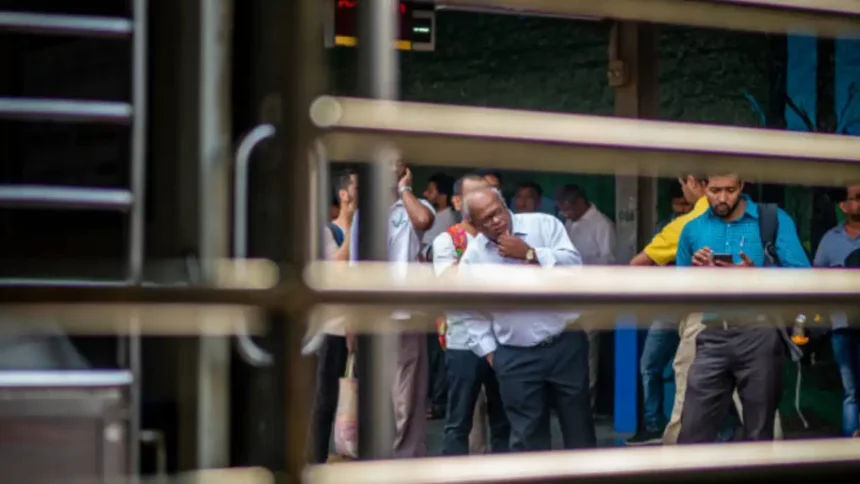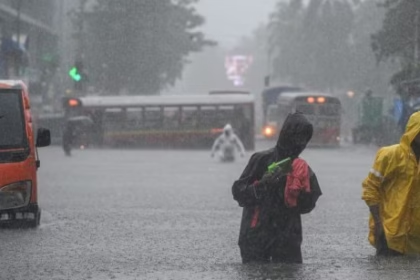Mumbai Office Timings to Change as 46 Companies Accept Railways’ Call to Reduce Local Train Crowding
Mumbai, often described as the lifeline of India’s economic and cultural dynamism, runs on an unwritten contract between time, transport, and tenacity. For decades, the city’s famed local train system has carried millions across its suburban sprawl—from Virar to Churchgate, Kalyan to CST—serving as the unrelenting heartbeat of daily life. Yet, the very success of this system has long been weighed down by its greatest burden: overcrowding.
Recognizing this chronic issue, and in a significant shift toward public-private collaboration, the Indian Railways recently appealed to corporate employers to stagger office hours and help decongest peak-hour rush on local trains. In a historic response, 46 Mumbai-based companies have formally agreed to adjust their office timings, marking a decisive step in reshaping the city’s daily mobility ecosystem.
This is not merely a scheduling reform. It is a paradigm shift in urban planning, workforce flexibility, and infrastructure optimization. The implications are vast: from employee well-being and transit safety to productivity, carbon impact, and even long-term urban design. In this long-form article, we explore the story in depth—beginning with the evolution of Mumbai’s transport crisis, the genesis of the Railways’ appeal, and the companies that have decided to act.
Mumbai’s Local Trains: From Lifeline to Logjam
No city in India—and perhaps the world—depends on a single mode of mass transit the way Mumbai does on its suburban railway network. With over 8 million passengers commuting daily via Western, Central, and Harbour lines, the Mumbai local train is a miracle of movement. Yet, it’s also a daily ordeal.
Over the years, the crowd density has escalated well beyond safety thresholds. At peak hours, a single coach designed for 350 passengers may carry over 500, leading to dangerous boarding conditions, suffocating rides, and countless minor injuries. In worst cases, the crowd crush has turned fatal.
The pandemic years briefly reduced load due to remote work, but post-2022, ridership has bounced back with vengeance—now with an even more concentrated demand during traditional 9-to-5 schedules. While authorities expanded services, added coaches, and modernized stations, structural limitations remain: track capacity is finite, land for expansion is scarce, and infrastructural upgrades take time.
What remained underutilized, however, was an alternate lever—managing demand, not just supply. And that’s exactly what the Railways tapped into by calling on employers to restructure work hours.
Genesis of the Appeal: Indian Railways’ Data-Driven Strategy
The decision to approach companies was not made lightly. For months, officials of the Mumbai Railway Vikas Corporation (MRVC), Western Railway, and Central Railway jointly analyzed origin-destination data, commuter volume trends, ticket scans, and crowd pressure points. The conclusions were stark:
- 70% of the daily footfall occurred within just four hours—8:00 AM to 12:00 PM and 5:00 PM to 9:00 PM.
- The maximum crowd density was concentrated between 8:30 AM to 10:30 AM and 6:00 PM to 8:00 PM.
- Corporate office-goers, BPO workers, and bank staff made up a substantial portion of the peak-hour rush.
Armed with this data, the Indian Railways initiated conversations with large employers across Mumbai, Navi Mumbai, and Thane. The goal: convince them to stagger office shifts, start earlier or later, allow hybrid models, and thereby flatten the peak demand curve.
What made this effort different from past appeals was its collaborative tone and strategic clarity. Rather than issuing rigid directives, authorities presented flexible options, showed statistical models, and offered phased transition plans. The outreach emphasized that sustainable urban commuting is a shared responsibility.
Who Said Yes, and Why It Matters
Among the first 46 companies that agreed to modify their office timings are a mix of IT majors, banks, logistics firms, government departments, insurance companies, and consultancy firms. Though not all names have been made public due to privacy agreements, several are mid-sized to large employers located in high-congestion zones like Bandra-Kurla Complex (BKC), Lower Parel, Vikhroli, Andheri, and Fort.
The companies fall broadly into these categories:
- Financial Services: Branch offices and back-end operations of banks and insurance firms
- IT/ITES and BPOs: Particularly those with multiple shifts or flexible project windows
- Government/PSUs: Local offices of nationalized banks, transport bodies, and administrative departments
- Corporate Parks and SEZs: Especially those near high-traffic stations like Vashi, Goregaon, and Thane
These companies have voluntarily agreed to implement staggered work shifts, such as:
- Starting work at 7:30 AM or 11:00 AM instead of 9:00 AM
- Ending shifts before or after the 6:00 PM to 8:00 PM window
- Allowing alternate-day remote work for support staff
- Launching internal shuttles for last-mile connectivity to non-peak trains
This is a major breakthrough. Never before has Mumbai seen such a coordinated and cooperative adjustment of the city’s dominant daily schedule.
Relief, Skepticism, and Adjustment
For many employees, the move was met with cautious optimism. While the idea of avoiding train crushes is widely welcomed, changing deeply ingrained routines—school drops, family schedules, second jobs—can be challenging.
“I used to leave home at 8:15 AM and barely survive the 9:00 AM Dadar crowd. Now I catch a 7:10 AM train, reach early, and leave before 4 PM. It’s peaceful, but I had to shift my entire family’s schedule,” said Pradeep Nair, a marketing associate working in a logistics firm in Andheri.
“My manager allowed WFH twice a week. I don’t mind starting work at 11 AM and ending late, but it affects my daughter’s pickup,” shared Ritika Mehta, an analyst with a finance firm.
Others expressed concern about differential treatment, with only junior or mid-level staff being asked to change timings. “Leadership comes in at 10 and leaves at 6. The crowd remains if only we change,” one employee quipped.
Still, the general sentiment is one of positive adjustment. Most commuters see this as an overdue shift toward humanizing the workday, particularly in a city where commuting often takes longer than the job itself.
Implications for the Future: Is This the Start of a Cultural Shift?
Urban planners and mobility experts believe this initiative could be a template for future transport planning in other Indian metro cities. By treating mobility as a demand-supply equation, the Railways and employers are moving toward a people-first infrastructure model, rather than a purely hardware-driven one.
If the current trial phase succeeds, the government is expected to:
- Expand the initiative to more companies (target: 200+ by end of year)
- Introduce dynamic fare incentives for off-peak train travel
- Work with employers to develop ‘mobility audits’—where companies measure the transport impact of their work hours
- Push for zoning rules in urban development to reduce residential–workplace travel distances
This could fundamentally change how Indian cities think about work-life balance, carbon emissions, and inclusive urban growth.
A City Takes a Breath
Mumbai’s effort to reduce local train crowding by partnering with the private sector signals a mature moment in urban governance. It is a recognition that infrastructure alone cannot solve congestion, and that behavioral change, when encouraged collaboratively, can be more impactful than rigid enforcement.
As the first 46 companies lead the way, the rest of the city—and indeed the country—watches closely. This may well become a landmark chapter in India’s journey toward smarter, more humane, and future-ready cities.
The Mumbai Suburban Railway system is one of the most heavily used and overburdened public transport networks in the world. For decades, it has served as the indispensable spine of the city’s daily mobility, transporting over eight million passengers every day—more than the entire population of some countries. But behind the awe-inspiring efficiency lies a system under constant strain, where every rush hour brings commuters to the edge of physical endurance and operational infrastructure to the brink of collapse.
In Part 2 of this long-form series, we delve into the roots of Mumbai’s railway congestion crisis—examining historical oversights, infrastructural limitations, population growth, and urban sprawl. We investigate how a transport miracle became a near-daily calamity, and why changing office timings might finally offer some breathing room to a city choking on its own motion.
The Origins: A Colonial Inheritance Now Stretched Thin
Mumbai’s suburban railway dates back to 1853, when the first passenger train in India ran from Bori Bunder to Thane. Over the next 100 years, the city’s rail system expanded in tandem with industrialization, with Western, Central, and Harbour lines emerging as critical lifelines.
But the basic design philosophy—of radial, high-frequency lines converging on South Mumbai—remained largely unchanged even as the population exploded. By the 1990s, Mumbai had added millions of new residents without commensurate expansion in its rail or road capacity. The focus remained on infill development, with new residential pockets springing up farther into the suburbs—from Mira Road and Virar in the west, to Kalyan and Karjat in the east.
Despite this, the rail system continued operating on two to four lines per corridor, running trains every 3 to 6 minutes during peak hours. Platform lengths, track layouts, signal systems, and turnarounds were optimized—but not fundamentally redesigned—for the new levels of pressure.
The Daily Struggle: Numbers That Tell a Human Story
- 8.1 million daily passengers across all suburban lines
- Over 3,000 train services per day, with intervals as low as 180 seconds during rush hour
- 16+ passengers per square meter in crowded compartments, compared to an ideal of 6
- More than 3,500 passengers per 12-car rake during peak time—well beyond safe capacity
- Deaths and injuries due to falling from trains, overcrowding, or accidents number in the hundreds annually
For the average commuter, this translates to:
- Boarding a train at full sprint
- Standing with almost no space to move or even breathe
- Risking injury or worse while getting in or out
- Spending 2 to 4 hours a day in physically punishing conditions
These numbers don’t just reflect inefficiency—they reflect systemic stress that has long passed the point of safe tolerance.
The Infrastructure Gap: Expansion Plans That Lag Behind Reality
Over the past two decades, both the Indian Railways and the state government have announced several expansion projects intended to relieve the pressure on Mumbai’s suburban network. These include:
- Mumbai Urban Transport Project (MUTP) Phases 1, 2, and 3
- Dedicated Harbour line upgrades and station reconstructions
- Quadrupling of tracks in segments like Virar–Dahanu and Kurla–Kalyan
- Introduction of AC local trains, to modernize the fleet
- The ongoing work on the Mumbai Metro network, to absorb east-west traffic
However, nearly all of these projects have suffered from:
- Funding bottlenecks between state and central governments
- Delays in land acquisition, especially for right-of-way expansions
- Opposition from resident welfare groups and environmental activists
- Policy inertia in decision-making at multiple bureaucratic layers
Even well-funded initiatives like MUTP-3A, which includes new 5th and 6th lines between Borivali and Virar, have moved at a glacial pace, often delayed by years.
As a result, supply-side expansion has always remained behind demand growth, perpetuating a cycle of reactionary infrastructure.
Population Pressure and Urban Sprawl: The Double Bind
Mumbai’s transport woes are compounded by how the city has physically evolved. Skyrocketing real estate prices in the south and central zones have pushed new residents further into the suburbs, creating long-distance commuting cultures. In areas like Vasai, Virar, Ambernath, and Badlapur, entire townships exist solely because people are willing to spend 3–4 hours daily commuting to jobs in Andheri, Lower Parel, or Fort.
- In 1991, suburban Mumbai housed 40% of the metro population.
- By 2021, that figure had crossed 65%, with some estimates pegging daily long-distance commuters at over 2.5 million.
- The western line alone caters to over 3.6 million passengers every day, despite severe constraints in track capacity.
This means that without alternative transportation corridors—like metro lines, elevated expressways, or sea links—the suburban railway becomes a bottleneck for the city’s economy and livability.
The Human Cost: When Mobility Becomes Trauma
Beyond the numbers and graphs, there is the lived experience—of physical exhaustion, psychological strain, and the normalization of danger. For many Mumbaikars, commuting is not a mere necessity—it is an act of endurance.
Stories of people fainting in compartments, fighting for foothold, or having to board moving trains at full speed are not exceptions—they are part of the daily script. Women commuters face additional challenges—limited ladies’ compartments, lack of toilets, and vulnerability to harassment during early or late hours.
Even after significant upgrades like CCTV installations, GPS trackers, and improved lighting, the emotional fatigue of commuting remains high. It affects family time, health, productivity, and even career decisions, with many professionals rejecting jobs based solely on commute feasibility.
A Supply-Side Solution by Demand Management
In this context, the decision by 46 companies to stagger office timings represents a radically new kind of intervention—one that does not rely on building more, but on using existing infrastructure more wisely.
By redistributing the passenger load more evenly across time slots, the city can:
- Reduce physical crowding during peaks
- Improve turnaround times at stations
- Allow for better maintenance schedules between rush windows
- Enable more women and senior citizens to commute safely
- Improve punctuality and reduce the “accordion effect” caused by delays due to overloading
Moreover, this kind of behavioral and corporate-led change opens doors to rethinking not just train schedules, but also how cities structure work, school, and services.
A Problem Too Big to Ignore
Mumbai’s rail congestion is not a recent issue. It is the result of decades of inertia, population shifts, economic centralization, and infrastructural stagnation. The system has held up only due to the resilience of commuters and the tireless work of railway staff—but resilience is no substitute for reform.
The current move toward staggered office timings, while modest in scale, marks a potential shift in how Indian cities solve urban transport crises—not only by building more flyovers or rails but by changing patterns of usage, time, and responsibility.
Mumbai’s current initiative to ease congestion by altering office schedules is not unprecedented. In fact, many of the world’s largest and densest cities have faced similar transit crises—and several have responded with creative, structured, and highly effective measures to balance demand, improve commuter experience, and create long-term transport resilience.
In this third segment, we explore how major global cities—Tokyo, London, New York, Seoul, Singapore, and others—have successfully tackled commuter congestion. We’ll examine the strategies they implemented, the cultural and institutional changes involved, and what lessons Mumbai can realistically adopt in its own context of infrastructure constraints and demographic pressures.
Tokyo: Mastering the Art of Time-Based Density Management
Arguably the most referenced city in discussions on transit efficiency, Tokyo’s rail system carries more than 14 million passengers daily, yet operates with extraordinary punctuality and coordination. But this hasn’t always been easy—Tokyo, too, suffered intense overcrowding in the post-war decades.
Here’s how Japan responded:
- Staggered Work Policies: Japan was one of the earliest adopters of time-shifting work hours. Since the 1970s, companies have encouraged employees to start at 7:00 AM or 11:00 AM to offset morning peaks.
- Off-Peak Incentive Programs: Discounted fares were introduced for off-peak travelers, especially students, part-time workers, and pensioners. Trains before 7:00 AM were up to 30% cheaper.
- Private Rail Conglomerates: Tokyo’s rail system is a blend of public and private operations. Companies like JR East, Tokyo Metro, and Toei coordinate service timings and fare integration, allowing seamless transfers and efficient scheduling.
- Real-Time Passenger Load Displays: Platforms display not just arrival times, but crowding levels in each car. Commuters can choose a less crowded section, spreading out the load.
- Social Pressure and Cultural Norms: Punctuality is not just enforced—it’s internalized. Office workers arriving “late” due to traffic are viewed unfavorably. This embedded cultural discipline enables timed entry strategies to succeed.
Mumbai’s takeaway?
If staggered hours are to succeed, they must be backed by data visibility, employer commitment, and public transport agencies coordinating across modes.
London: Zone-Based Pricing and Teleworking Culture
The London Underground, despite its age, remains one of the world’s most efficiently run networks. But like Mumbai, it once buckled under peak-hour pressure—particularly before the mid-2000s. The city’s recovery came through pricing reforms and employer buy-in.
Key measures included:
- Zonal Fare Systems: Travel from outer zones to central London is priced higher during peak hours. This not only generates revenue but discourages unnecessary peak-time travel.
- Congestion Pricing for Roads: Cars entering Central London during peak hours pay hefty congestion charges, which push commuters toward early or late-hour public transport.
- Flexible Work Policies: Even before the pandemic, London’s public agencies partnered with employers to introduce “WorkSmart” programs, urging businesses to allow late arrivals or early exits for employees commuting long distances.
- TfL Partnerships with Employers: Transport for London (TfL) directly liaised with large office parks and businesses to map commute patterns and redesign shift schedules accordingly.
Mumbai’s takeaway?
A mix of smart pricing, corporate coordination, and public-private data exchange can create the right environment for voluntary schedule changes.
New York City: Demand-Responsive Service and Messaging
New York’s subway system, operated by the Metropolitan Transportation Authority (MTA), carries nearly 5.5 million passengers on a weekday. While older and more vulnerable to infrastructure fatigue, NYC has made major strides in dynamic demand response.
Key strategies include:
- Peak/Off-Peak Scheduling Adjustments: Trains are added or removed from lines based on real-time crowding data, with algorithms adjusting train intervals hourly.
- Telecommuting as a Public Policy: Even before COVID-19, New York State encouraged remote work on specific days of the week—especially during major weather disruptions or citywide events.
- Messaging Campaigns: The MTA invests in large-scale public awareness campaigns—on buses, in trains, and online—educating citizens about off-peak benefits and commute planning.
Mumbai’s takeaway?
Communication is critical. Mumbai’s railways can consider SMS alerts, app integrations, and in-train messages to gradually condition commuters toward adjusted travel habits.
Singapore: Government-Led Synchronization
Singapore’s entire public transport system, overseen by the Land Transport Authority (LTA), is among the best planned in the world. Its success stems from strict planning, tight employer collaboration, and heavy investment in commuter behavior design.
Major strategies include:
- “Travel Smart” Rewards: Commuters earn travel credits or meal vouchers if they tap in before 7:45 AM.
- Employers’ Pledge Program: Hundreds of companies signed pledges to stagger shifts, and received public recognition, tax benefits, and urban planning support in return.
- High Penalties for Peak-Time Driving: Through Electronic Road Pricing (ERP), Singapore ensures that roads stay uncongested during rush hours, thereby nudging people to take public transport early.
- Unified App Ecosystem: A single app (MyTransport.SG) combines MRT schedules, bus arrival times, car parking availability, and cycling routes. This gives commuters complete visibility, improving planning confidence.
Mumbai’s takeaway?
Gamifying commuter behavior and giving real-time incentives can help shift millions without resistance.
Seoul: The Role of Infrastructure Modernization and Fare Integration
South Korea’s capital city invested heavily in infrastructure expansion to match its urban growth. But it didn’t stop at building—it also reengineered commuter psychology.
What Seoul did differently:
- BRT + Subway Integration: Seamless fare transfer between buses and subways allowed riders to avoid overcrowded lines.
- Color-Coded Crowd Indicators: Apps and LED indicators showed crowding levels across carriages. AI-based routing suggestions were pushed to commuters to optimize load balance.
- School and Office Time Shifts: Seoul worked with public schools and colleges to shift start times by 30–45 minutes, lightening the early morning load on transport.
Mumbai’s takeaway?
Transport policy must link with education, housing, and labor policy—not just operate in a silo.
Common Threads: What All These Cities Got Right
Despite their differences, successful global cities applied five key principles:
- Demand Distribution: By flattening the curve of commuter volume over time, they reduced the need for constant infrastructure expansion.
- Data-Driven Policy: Every intervention was based on granular commuter data—origin-destination mapping, crowd heatmaps, ticketing patterns.
- Employer Integration: Governments made companies part of the planning process, not just subjects of it.
- Cultural Conditioning: Through messaging, gamification, and awareness, they cultivated new commuter habits.
- Multimodal Coordination: Subways, buses, taxis, cycles, and even ferries were synchronized for timing and fares, giving people options to escape the “crush corridor.”
Global Inspiration for Local Transformation
Mumbai’s bold move to coordinate office timings may seem like a small step. But as this global review shows, it could be the first in a series of transformative decisions. The experiences of Tokyo, Singapore, and London remind us that change is not only possible—it is scalable, impactful, and sustainable when done right.
As the city inches toward a smarter mobility future, borrowing global best practices and adapting them to local realities could be the defining hallmark of a 21st-century Mumbai.
Also Read : Woman Alleges Rape Inside Boys’ Hostel — 1 Student Arrested in 24 Hours








